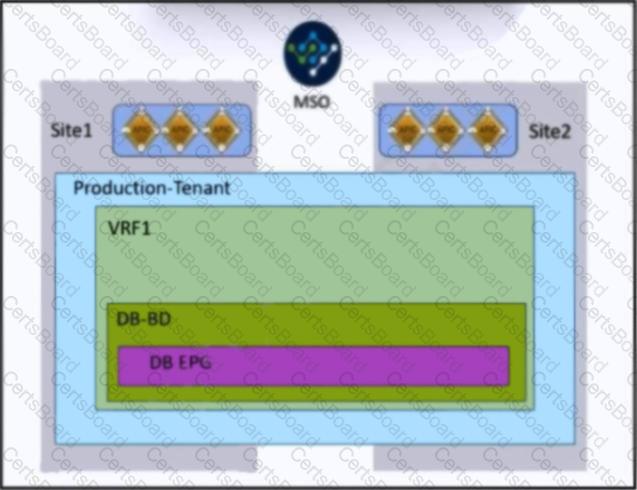
Refer to the exhibit. An engineer must allow IP mobility between Site1 and Site2 in a Cisco ACI Multi-Site orchestrator. The design must meet these requirements:
A disaster recovery (DR) solution must exist between the sites that do not require vMotion support.
The application must be started at a DR site without having to re-IP the application servers.
The solution must avoid any broadcast storms between the sites.
Which two actions meet these criteria? (Choose two.)
A Solutions Architect is asked to design two data centers based on Cisco ACI technology that can extend L2/ L3, VXLAN, and network policy across locations. ACI Multi-Pod has been selected. Which two requirements must be considered in this design? (Choose two.)
Regarding the MTU value of MP-BGP EVPN control plane packets in Cisco ACI, which statement about communication between spine nodes in different sites is true?
Which statement regarding ACI Multi-Pod and TEP pool is true?


